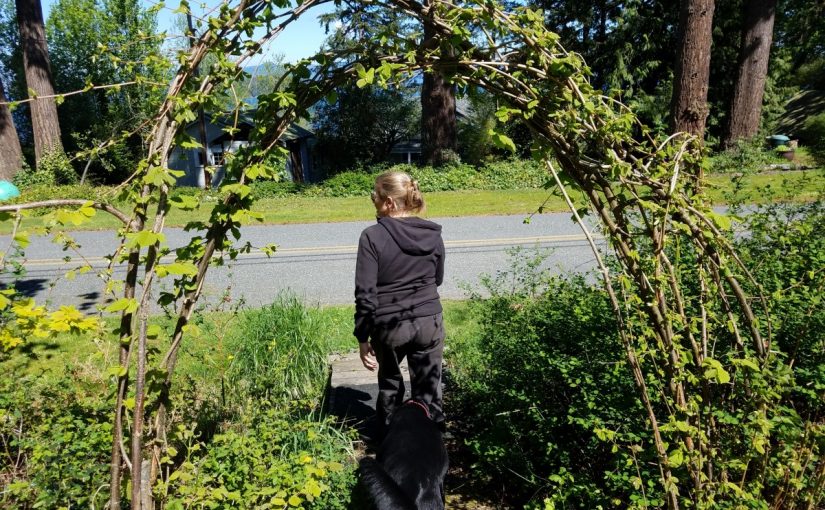Photo Above: Coppiced Beaked Hazelnut
The Duwamish Tribe originally inhabited the city of Tukwila, which means the land of the hazelnuts. The hazelnut that was and is undoubtedly present in Tukwila is the beaked hazelnut, or Corylus cornuta. The beaked hazelnut is a thicket-forming shrub that reaches 12-15 feet in height. The beaked hazelnut can grow in damp rocky slopes, stream banks, and riparian areas. The nuts can be pounded into cakes with berries, meat, or animal fat, while the nut’s milk is delicious and reputed to treat colds and coughs.[1] People of many tribes in California picked hazelnuts by the basketful and at them raw or roasted; the Yurok pounded hazelnut kernels into a flour, added warm water, and used the mixture to nurse sickly children or ill person with weak stomachs and the Thompson Indians of southern British Columbia burned hazelnut bushes to enhance nut production.[2] The hazelnut was also an important source of building materials. The Miwok and Yokuts selected sprouts that were straight to be used for basketry and cooking utensils.[3]
[1] https://plants.usda.gov/plantguide/pdf/pg_coco6.pdf
[2,3] Anderson, K. (2005). Tending the wild: Native American knowledge and the management of California’s natural resources. pg.172. Univ of California Press.
